Personal Line of Credit
A line of credit allows you access to money “on demand.” It’s not exactly a personal loan and not quite a credit card.
It has an edge over both.
A personal line of credit has a lower interest rate than credit cards, and
it gives variable access to funds instead of a one-time fund access of a personal loan
What is a Personal Line of Credit?
A personal line of credit is a ready source of funds for personal as well as business needs. It gives you access to money, up to a certain limit. You can withdraw from the line of credit, up to your credit limit for as many times as you want and for anything you want to use it for. However, whatever amount you withdraw, you need to repay it with interest.
The interest is charged on the amount drawn from your credit line and not on the entire credit limit. The personal line of credit stays with you for life as long as you keep repaying the borrowed amount and not exceed your credit limit amount.
Types of Lines of Credit (LOCs)
Lines of credit are generally categorised into two types: Secured and Unsecured. Let’s take a quick look at both of these:
Secured Line of Credit
In a secured credit line, you get the loan against collateral. If you fail to repay, the lender can seize or liquidate your assets.
Unsecured Line of Credit
An unsecured credit line is a revolving credit account. You need not pledge collateral. The bank or the financial institution approves the credit line solely on the basis of your income and your credit score. Since the risk is greater here, the lender will charge a higher interest rate.
Depending on the purpose for which the line of credit loan is used, it can be classified as a personal credit line or business credit line.
Personal Line of Credit
Typically used for meeting the expenses of an urgent and immediate nature or long-drawn expenses, such as a sudden financial need or a family function or even a big purchase.
Business Line of Credit
It can be used for funding your business expenses, often of an ongoing nature, such as working capital requirements, wage payments, purchase of raw materials and inventory, etc.
Similarities and Differences
of a Personal Line of Credit With Other Types Of Credit
Personal Line of Credit Vs. Credit Card
What’s Similar
They are unsecured revolving credit lines.
You can choose to make minimum payments or pay off the entire balance at the end of each month.
They have a preset limit; you can only spend up to the credit limit.
Your activity and payments are reported to the credit bureaus, regardless of whether you’re using them or not.
Although most personal lines of credit do not offer rewards, there are a few rare types like MoneyTap’s personal line of credit that offers reward programs just like a credit card.
What’s Different
A credit card is generally used for everyday purchases and spending, while a line of credit is more for ongoing or recurring expenses, big-ticket items, and business expenses.
A line of credit usually has a higher limit than a normal credit card.
A personal line of credit is difficult to get than a credit card.
The interest rate applied on a credit line is much lower than that of a credit card.
Personal Line of Credit Vs. Personal Card
They provide you an easy way to get cash when you need it.
They are unsecured credits that don’t need any collateral. You can use the funds for whatever you need.
They have a similar application process and credit requirements. The lenders review your creditworthiness and income to decide whether to approve or deny your application.
Although each lender has its own set of eligibility criteria, the basic requirements for both the types of credits are similar.
You need to have good credit for getting approval and an excellent credit score for getting credit at favourable terms.
With a personal loan, the amount approved is given to you in one go. A line of credit, however, is a revolving credit. You can choose to borrow all at once or withdraw money as and when it’s needed from the credit limit approved.
A personal loan charges interest on the whole amount that’s given to you upfront. However, in the case of a personal line of credit, the interest is applied only to the amount you draw against your credit line.
Once you pay off your personal loan, the account gets closed. If you need funds in the future, you have to reapply for the loan. However, a personal line of credit remains active for a lifetime as long as you repay the borrowed amount regularly.
Different Ways to Use MoneyTap Personal Loan
Marriage Loan
Medical Loan
Education Loan
Two-Wheeler Loan
Mobile Loan
Consumer Durable Loan
Laptop Loan
Used Two-Wheeler Loan
Advantages and Disadvantages of a
Personal Line of Credit
Advantages
Higher Flexibility: You can withdraw as low or as high an amount, up to your credit limit.
Cost-Effectiveness: You have to pay interest only on the amount you borrow and not on the credit limit approved.
Lower Interest Rate: The rate of interest levied on the loan amount is considerably lower as compared to that accrued by credit cards.
High Credit Limit: Depending on your creditworthiness and your requirement, you can get approved for a higher credit limit that gives you the freedom to manage your financial obligations as and how you want to.
Ideal for Business Owners: New business owners’ financial needs vary from time to time and most often than not, they do not have the funds needed to service these needs. When getting a business loan is challenging, a personal line of credit proves to be the best option because of the low-interest rate and high flexibility.
Best for Emergency Situation: You can access funds from your credit line 24/7. This feature proves to excellent when faced with a medical emergency or any other kind of emergency that needs financial commitment.
Disadvantages
Tips to Consider Before Applying a
Personal Line of Credit
Assess all costs
When you borrow a personal line of credit, there may be a few charges or fees, such as processing fees, late payment fees, and prepayment fees, etc. applied. Consider these fees before applying for the credit line to decide whether you can afford the credit line.
Compare the interest rates in the market
Make sure you compare the offers from various lenders to ensure that you select the offer that gives you the credit line at the lowest rate of interest.
Consider your needs to arrive at the right loan amount
Make a list of things you are going to finance with a credit line. Prioritise which needs you have to finance first. Decide the amount you need depending on the expenses associated with your needs.
Maintain a good credit history
A credit score or CIBIL score is a reflection of your credit behaviour. The score ranges from 300-900. A score above 750 is considered ideal for getting a loan approved at favourable terms. A lower credit score is a demonstration of poor debt management and may result in loan rejection or loan approval with a higher interest rate.
One of the best ways to ensure a good credit score is by paying your dues on time. Set reminders or automate your payments, if needed.
Evaluate your ability to repay the loan
Make a repayment plan before you borrow the credit line. Ensure that your monthly income is sufficient to repay the borrowed amount. While doing so, consider your debts and other financial obligations you have to service every month. The best way to evaluate your affordability is to calculate your EMI using an EMI calculator. You can find the EMI calculator here.
Tips for When to Use (And Not Use)
a Personal Line of Credit
If you need the money for home renovation projects, education costs, or other types of major and recurring expenses and emergencies, a personal line of credit may be a good idea as long as you have the plan to repay the borrowed amount.
You can use the personal credit line to consolidate multiple smaller debts into one payment, thus saving money on interest.
If you know, you can’t afford repayments, and when your income is dwindling, a credit line may not be a good idea. Because if you miss any payments, your credit is most likely to suffer, making it very difficult for you to get credit in the future.
If you intend to take a personal line of credit to fund your basic needs or everyday expenses means that you are struggling financially, it’s not recommended. Taking on new debt is not the solution here; serious budgeting is.
How to Apply for a Personal Line of Credit in India?
To apply for a personal line of credit, you’ll need to submit certain documents. Below is the list of documents,
banks and other financial institutions usually ask:
The bank/lender will verify these documents, check your credit score and then approve or reject your request for a credit line. The interest rate offered on the credit line largely depends on your monthly income and your credit history.
How to apply for Personal Loan
Eligibility Criteria
Must be a full-time salaried employee with a minimum take-home salary of ₹30,000/month
or
Must be a self-employed professional with an income of at least ₹ 30,000/month.
(Only certain professionals like doctors, lawyers, or business owners qualify)
Must be above 23 years and below 55 years of age
Must be a resident of one of the following cities:
View city list
View More
Required Documents
Pan Card Number
Professional Selfie
To be taken on the MoneyTap App
Address Proof
Valid Driving License / Valid Passport / Aadhar Card
ID Proof
Valid Driving License / Valid Passport / Voter’s ID / Aadhar Card / Pan Card
View More













